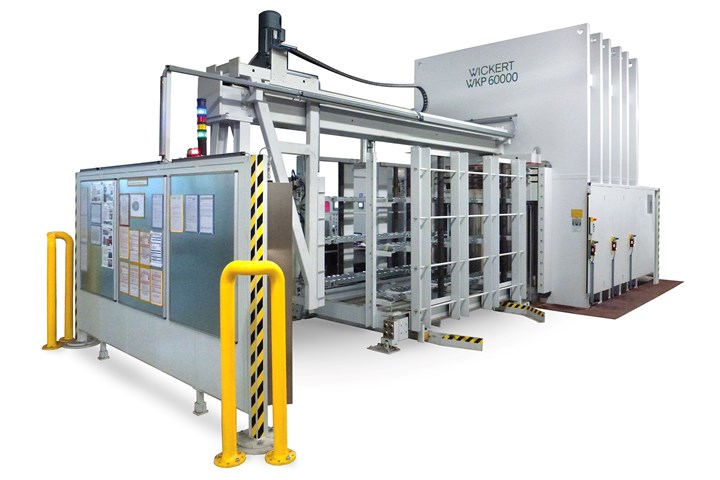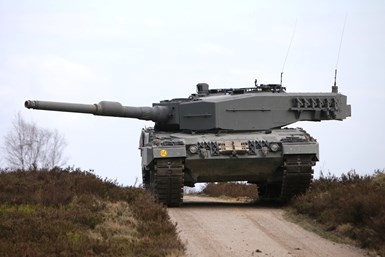Wickert commissions composite press for ballistic plate production
Wickert reports an increasing interest in complete presses used to produce composites-intensive armor for civilian and military vehicles, ships and aircraft.
Share
Read Next
The composite press delivered to Australia is a smaller model of the WPK 60000 illustrated here with automatic loading and unloading. Photo Credit: Wickert Maschinenbau GmbH
Since 2021, Wickert Maschinenbau (Ladau, Germany) and Wickert Hydraulic Presses USA (Hebron, Ky., U.S.) has recorded a considerable increase in interest in composite presses — particularly complete systems comprising a composite press, automated loading and unloading, along with efficient temperature control — for producing ballistic panels, used for armoring to protect civilian and military vehicles, ships and aircraft from gunfire. Most recently at the end of 2021, Wickert says it commissioned a complete system for an Australian Ministry of Defense supplier.
Wickert delivered a WKP 52000 composite press that had been modified to meet the requirements of ballistic plate production. Weighing 150 tons, the press features a lower-piston frame design with a fully hydraulic closing system and boasts a press force of 52,000 kilonewtons (with a fine pressure setting of 960 kilonewtons provided as an optional feature) and 1,600- x 2,500-millimeter heating plates.
Producing ballistic panels involves processing blanks of up to 60 layers of pre-impregnated fibers, Wickert says. The resin matrix typically comprises materials such as aramide or high-performance polyethylene, reinforced with glass, ceramic and metal fibers made of aluminum oxide, silicon carbide, boron carbide, aluminum and armor steel. The prepreg fibers are then heated in composite presses and pressed into fiber-reinforced composite panels.
Composite presses used to produce ballistic panels must adhere to specific requirements. To begin with, the blanks and semi-finished products are uniformly heated and cooled in the press, while the temperature deviation over the whole panel remains at ±3ºC. Next, the tempering system heats the products to 40ºC and then, in a second step, to 160ºC. This melts the material so that the press can give the blank the desired shape. Then it cools down again in the mold to 40ºC and, once removed, to room temperature.
The company points to its press’ very precise closing motion, contributed by the system’s high plane parallelism with a maximum tolerance of 0.025 millimeter/minute. To ensure quality and monitor production, sensors also capture all the system’s process data. The information is stored for accurate documentation of the production process.
Wickert’s hydraulic composite presses are developed and manufactured to meet customized requirements. Processing temperatures of up to 500°C are possible, as well as freely selectable pressing forces of up to 100,000 kilonewtons and a range of dimenions and precision heating plates.
Related Content
-
The next evolution in AFP
Automated fiber placement develops into more compact, flexible, modular and digitized systems with multi-material and process capabilities.
-
Pultrusion: The basics
A primer describing what pultrusion is, its advantages and disadvantages, and typical applications.
-
Plant tour: Albany Engineered Composites, Rochester, N.H., U.S.
Efficient, high-quality, well-controlled composites manufacturing at volume is the mantra for this 3D weaving specialist.


















